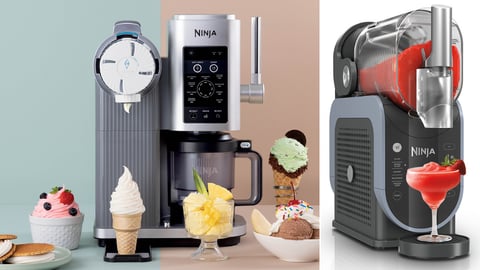How Consumer Products Brands Can Achieve Differentiation by Shifting From ‘Direct-To’ to ‘Direct-With’ Consumer Models
The direct-to-consumer (D2C) market has grown stratospherically in recent years with an increasing number of CPG brands adopting D2C as a business imperative. E-commerce now makes up approximately 6.6% of all CPG sales, with D2C accounting for 40% of the sales growth in the sector.
The pandemic has certainly accelerated the shift toward D2C, but for many CPG brands, the adoption of D2C business models predates the COVID crisis and will likely continue long thereafter. For CPG brands that are frustrated by a lack of control over their growth and limited access to their customers, D2C offers a wide range of measurable business benefits from creating new sources of revenue, to indirect factors like building more intimate consumer relationships through first-party data, quicker time to market for new products, greater control over the end-to-end consumer journey, and stronger brand share of voice.
Getting up and running on D2C is only the first obstacle that CPG brands must overcome. Ultimately, to drive growth, they must deliver unique digital experiences that create value beyond what can be achieved through any other channel and continuously iterate and mature these experiences in a way that incites the consumer to want to keep coming back.
Making the Shift From ‘Direct-To’ to ‘Direct With’
As competition heats up across the CPG landscape, we’ll see more brands adopt new ways of enticing consumers to engage the brand directly and to deliver meaningful value. This means moving beyond existing “direct-to” consumer models to a more streamlined, data-driven, and relational “direct with” consumer way of business.
As consumers become more sophisticated and empowered over their purchase decisions, they demand more value from the brands they love in exchange for their loyalty — having a good product is no longer enough. Many consumers expect brands to deliver personalized experiences, guide them to better decisions and outcomes, align with their core values and beliefs, champion social issues and causes of shared importance, and help foster connections with other people toward the achievement of a common goal.
[Related survey: State of DTC in Consumer Goods]
Here are three ways that CPG brands can successfully shift to “direct with” consumer engagement:
1. Partnering With Consumers to Alleviate Decision Paralysis
As product options increase and consumers’ purchase considerations expand and intensify, there is an opportunity for CPG brands to form an early connection to consumers by using data and AI to better understand the wider context of the consumer’s purchase decision and guide them to a decision that is just right for them.
Casper, the online sleep products company, has experienced widespread D2C success and established consumer intimacy by shifting the focus from the product toward the larger sleep experience. This has included the introduction of a variety of online product selection accelerators, including an AI-enabled recommendation engine, direct virtual consultations with sleep experts, consumer product reviews, the opportunity to enroll in an online “school of sleep,” and immersive experiences, all designed to help the consumer “feel” the product and reach a more confident online decision.
2. Partnering With Consumers to Solve Everyday Life Problems
CPG brands can leverage emerging technology and wrap personalized services around products to help consumers unlock additional value from the things they buy, provide richer experiences and rewards, and help consumers solve bigger problems and achieve better outcomes. Pivoting from a product-focused to a solution-focused value exchange enables brands to build deeper loyalty and more meaningful relationships with their target consumer base while also helping to stimulate new revenue opportunities.
Consider how Nestle has branched out from the food and beverage business into healthcare. In one such initiative, Nestle partnered with Japanese start-ups Genesis Healthcare and Halmek Ventures to leverage DNA and blood tests to provide consumers with personalized nutritional advice. Subscribers to the online service receive a home kit to carry out their own blood and DNA tests before submitting the results. Using the chat app Line, they can share photos of their meals for the platform’s AI to analyze, whereupon they will be given dietary advice.
3. Partnering With Consumers to Tackle Societal and Environmental Issues
With nearly half (46%) of consumers motivated to adopt a more sustainable lifestyle and with consumers four to six times more likely to purchase and champion purpose-driven brands, an increasing number of CPG companies are looking to create deeper connections between brand, consumer, and the wider community on topics like sustainability, equality, and social justice.
[See also: CGT's Sales & Marketing Report]
At a minimum, this includes informing and educating consumers on the environmental and societal implications of their choices. However, for leading CPG brands, it also means helping to alleviate the barriers that stand between consumer intent and action and, where possible, partnering with consumers for the achievement of common environmental and societal goals.
Consider the fashion and lifestyle brand Hush, which is teaming up with social venture Thrift+ to introduce a new recycle and reuse initiative to encourage its customers to donate fashion and accessories they no longer wear, or the Swedish denim company, Nudie Jeans, which provides free mail order repair kits and online videos to consumers so they can fix a pair of jeans at home and extend the life of the product. Both brands are providing consumers with the knowledge and tools they need to make more sustainable choices and collaborating with them every step of the way.
The Path Forward
As the CPG marketplace becomes increasingly competitive and routes to market proliferate, companies will continue to search for innovative ways to develop differentiated and meaningful one-to-one consumer relationships. The transition to a “direct-with” consumer model provides CPG companies with the opportunity to create a unique and long- lasting value exchange with consumers based on trust, intimacy, and relevance.
With direct channels as the focal point of brand experience and emerging technologies as a means of seamlessly integrating into the daily lived experiences of consumers, CPG brands can establish solid consumer partnerships that deliver value and purpose well beyond the products sold.
Scott Clarke is VP of Consumer Products Industry Lead at Publicis Sapient




